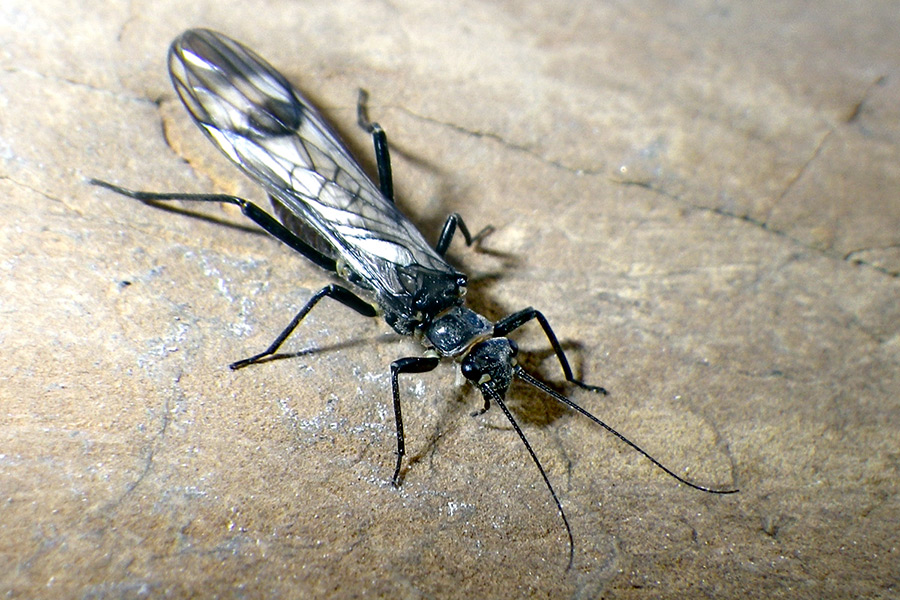A rare aquatic insect found exclusively in the high-elevation streams of Glacier National Park is vulnerable to extinction because of threats to its rarefied mountain ecosystem posed by climate change, according to a new study by local researchers.
The obscure western glacier stonefly, or Zapada glacier, lives exclusively in cold-water streams fed by Glacier Park’s melting glaciers and snowfields, and a recent study by government researchers in the park links the insect’s survival directly to the fast-declining glaciers.
According to the study, titled “Climate-induced range contraction of a rare alpine invertebrate” and published in the upcoming issue of “Freshwater Science,” loss of glaciers and increased stream temperatures due to climate warming in the stonefly’s alpine habitat is threatening its persistence.
In the study, researchers with the U.S. Geological Survey, Bucknell University, and the University of Montana use data spanning from 1960 to 2012 to illustrate habitat range contractions of the western glacier stonefly associated with glacial recession.
The western glacier stonefly is only found in Glacier National Park and was first identified in streams sampled between 1963 and 1979.
Between 2011 and 2013, scientists resampled six streams throughout the stonefly’s historical habitat range and, using species identification and genetic analysis, found the western glacier stonefly in only one previously occupied stream and in two new locations at higher elevations.
“Many aquatic species are considered vulnerable to climate change because they are cold-water dependent and confined to mountaintop streams immediately below melting glaciers and permanent snowfields,” said Joe Giersch, the study’s project leader and a U.S. Geological Survey scientist based in Glacier National Park. “Few studies have documented changes in distributions associated with temperature warming and glacial recession, and this is the first to do so for an aquatic species in the Rockies.”
The glaciers in Glacier National Park are predicted to disappear by 2030 and the western glacier stonefly is responding by retreating upstream in search of higher, cooler alpine stream habitats directly downstream of disappearing glaciers, permanent snowfields and springs in the park.
“The western glacier stonefly lives in the coldest, uppermost reaches of alpine streams at the apex of the Continent, and as they migrate upstream in response to warming water temperatures, there will soon be nowhere left to go,” Giersch said.
Until this study, little was known about the current status and distribution of the western glacier stonefly, which was recently petitioned for listing under the U.S. Endangered Species Act because it is at risk of becoming extinct due to the melting of the glaciers in Glacier National Park.
“There are a handful of other cold-water dependent alpine aquatic species here in Glacier that are at risk of extinction due to the loss of permanent snow and ice,” Giersch said. “Under a warming climate, the biodiversity of unique aquatic alpine species – not just in Glacier, but worldwide – is threatened, and warrants further study. The concern is not just about single species, as they are representative of an entire, unique ecosystem.”
